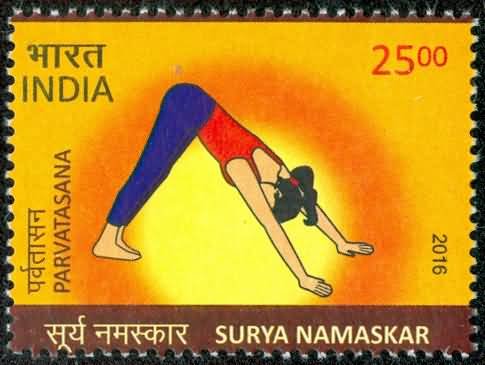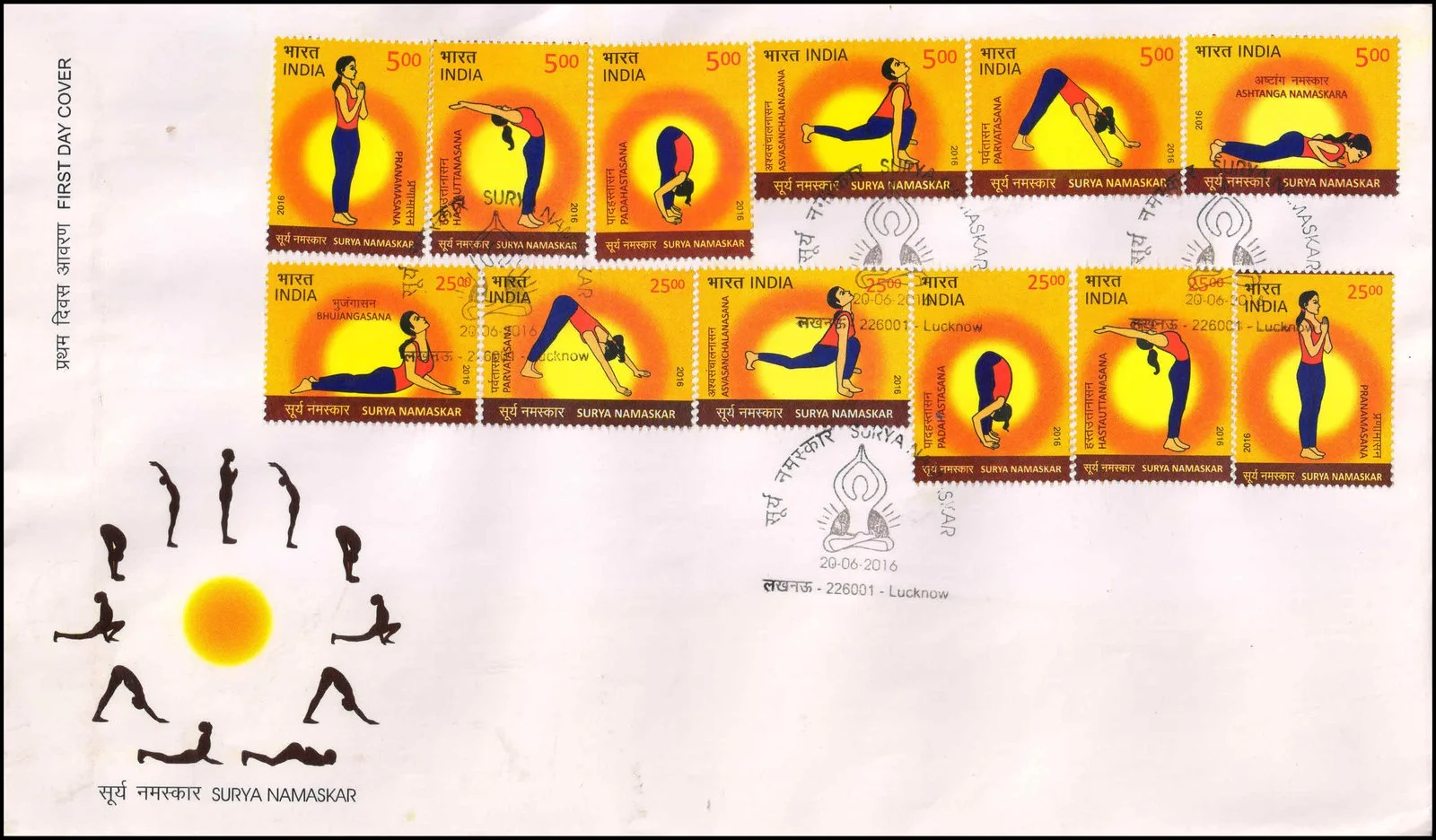Parvatasana

Technical Data
| Stamp Set | Surya Namaskar |
|---|---|
| Date of Issue | June 20, 2016 |
| Denomination | Rs. 25 |
| Quantity | 300,000 |
| Perforation | 13¾ x 13¼ |
| Printer | Security Printing Press, Hyderabad |
| Printing Process | Wet Offset |
| Watermark | No Watermark |
| Colors | Multicolor |
| Credit (Designed By) | Ms. Nenu Gupta |
| Catalog Codes |
Michel IN 2973A Yvert et Tellier IN 2687 Stanley Gibbons IN 3144 |
| Themes | Women |
Introduction
Parvatasana, also known as the Mountain Pose, is the fifth and eighth position in the Surya Namaskar sequence. The Sanskrit word “Parvata” means mountain, symbolizing stability, strength, and stillness. The pose reflects the firm and grounded nature of a mountain, helping the practitioner develop balance, endurance, and mental calmness.
Origin and Significance
The posture represents the power of grounding and the ability to remain steady amidst change—much like a mountain standing tall against the forces of nature. Parvatasana helps withdraw the mind from external distractions, promoting inner focus and stability. It marks a shift in Surya Namaskar where the body transitions into a triangular alignment, preparing it for deeper strengthening and stretching movements.
How to Practice Parvatasana
- From Ashwasanchalanasana, take the left foot back beside the right foot.
- Raise the buttocks upward and lower the head between the arms, forming an inverted “V” or a mountain-like triangular shape.
- Keep arms and legs straight in the final posture.
- Attempt to press the heels to the floor without force or strain.
- Bring the head closer to the knees while maintaining natural breath.
- In the repeat (8th position), return to this posture again from Bhujangasana, without moving hands and feet.
Awareness during the posture may be maintained on relaxing the hips or the throat region.
Benefits of Parvatasana
Parvatasana provides a deep stretch to the entire body while calming the mind and improving posture. It strengthens the musculoskeletal system and enhances overall body alignment.
Physical Benefits
- Stretches the spine, arms, shoulders, calves, and hamstrings
- Strengthens legs, arms, wrists, and core muscles
- Improves body posture and balance
- Relieves stiffness in the heels, ankles, and back
Internal System Benefits
- Enhances blood flow to the head and face
- Promotes better lung functioning and deeper breathing
- Stimulates the nervous system and boosts circulation
Mental and Emotional Benefits
- Induces calmness and mental clarity
- Helps release stress and fatigue
- Encourages patience, grounding, and inner stability
Role in Surya Namaskar
Appearing twice in the sequence—5th and 8th positions—Parvatasana acts as a balancing and energizing transition between forward and backward bends. It stretches the spine, activates the hips and abdomen, and enhances flow of prana throughout the body. This posture harmonizes breath, movement, and awareness while maintaining the rhythmic continuity of Surya Namaskar.
Conclusion
Parvatasana is a grounding and rejuvenating posture that enhances strength, flexibility, and mental composure. By encouraging steadiness and balance, it helps cultivate inner calm and focus, much like the silent endurance of a mountain. Practiced regularly as part of Surya Namaskar, Parvatasana supports physical well-being, improves posture, and nurtures a composed, balanced state of mind.
Commemorative Stamps on Surya Namaskar
To mark International Yoga Day on 21 June 2016, the Department of Posts released a set of 12 Commemorative Postage Stamps, each depicting one of the 12 positions of Surya Namaskar—highlighting Yoga’s cultural and spiritual significance.
First Day Cover

